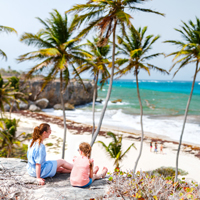Mumbai, the financial capital of India, is a bustling metropolis with a population of over 20 million. The city’s public transportation system is a lifeline for its residents, with millions relying on it daily for their commute. The system is diverse, comprising of the Mumbai Suburban Railway, the Mumbai Metro, the Brihanmumbai Electric Supply and Transport (BEST) buses, auto-rickshaws, and taxis. With such a comprehensive network, an expat living in Mumbai could comfortably live without a car, relying on public transportation and walking.
Mumbai Suburban Railway
The Mumbai Suburban Railway, colloquially known as the ‘local train’, is the backbone of the city’s public transport system. It operates on three lines – Western, Central, and Harbour – covering a vast network of 465 kilometers. The trains are safe to use, even at night, and are frequently used by women and school children. However, they can get extremely crowded during peak hours, which might be a bit overwhelming for newcomers. The fare is quite affordable, with a monthly pass costing around 150-400 INR (2-5 USD) depending on the distance. The trains run from 4 am to 1 am, with a frequency of 3-4 minutes during peak hours.
Mumbai Metro
The Mumbai Metro is a relatively new addition to the city’s public transport system. It currently operates on one line, covering a distance of 11.4 kilometers, with plans for expansion in the future. The metro is air-conditioned, making it a comfortable option in the city’s tropical climate. It is safe for all passengers, with separate compartments for women. The fare ranges from 10-40 INR (0.13-0.54 USD) depending on the distance. The metro operates from 5:30 am to midnight, with a frequency of 4 minutes during peak hours.
BEST Buses
The BEST buses are another popular mode of transport in Mumbai. They cover almost every part of the city and its suburbs, making them a convenient option for short distances. The buses are safe and reliable, with separate seats for women and senior citizens. The fare is based on the distance, with a minimum fare of 5 INR (0.07 USD). The buses operate from 5 am to midnight, with night services on certain routes.
Auto-rickshaws and Taxis
Auto-rickshaws and taxis are ubiquitous in Mumbai. They are metered, ensuring fair pricing, and can be hailed from the street or booked through mobile apps. Auto-rickshaws are a cheaper option, with a minimum fare of 18 INR (0.24 USD), while taxis have a minimum fare of 22 INR (0.30 USD). They are safe to use, even at night, and are a convenient option for door-to-door travel.
Conclusion
Overall, Mumbai’s public transportation system is comprehensive and affordable, making it possible for expats to live comfortably without a car. However, it is important to note that the system can get crowded during peak hours, and traffic congestion is a common issue. Therefore, it is advisable to plan your travel accordingly and allow for extra time during rush hours.


